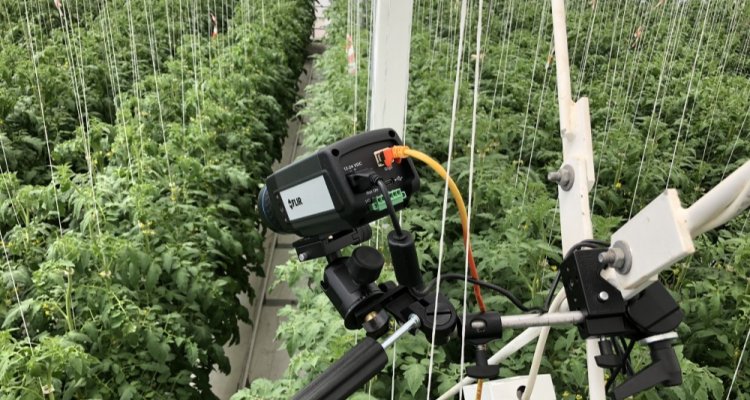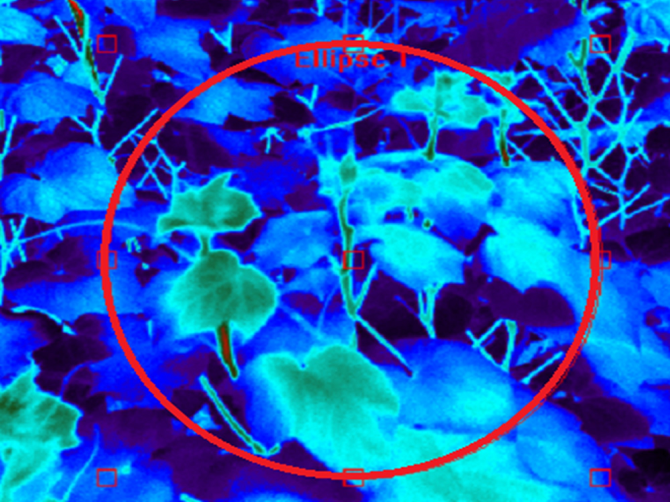
News
Better view on crop temperatures
Crop temperature can be used as an early warning for problems in water transport to the leaves. The crop temperature will then be higher than normal. But what is normal, and how does this depend on other greenhouse climate factors? This summer, this will be mapped out in detail for a number of greenhouse crops by the Greenhouse Horticulture and Flower Bulbs Business Unit of Wageningen University & Research.
The leaves of plants are warmer than the surrounding air on a sunny day, and colder at night. This temperature difference depends on the amount of sunlight and the crop evaporation. Or more precisely: on the resistance for water transpiration. The evaporation of water by the leaves extracts latent heat. This provides cooling and makes that even in full sun light the crop gets only a few degrees warmer than the air.
A notably higher crop temperature indicates malfunctioning evaporation. The crop temperature can be measured with infrared sensors and thus an indicator can be obtained for the condition of the crop.

KASSIM
But what is a normal increase in temperature? And how does it depend on other greenhouse conditions, such as the intensity of the solar radiation and the humidity? An answer to that question can be provided by the educational simulation program KASSIM. This program uses a greenhouse climate model that describes the interaction between plant and greenhouse climate for crops such as tomato, cucumber, rose, gerbera and anthurium.
KASSIM - which is already online for a while - gives realistic results, as long as the greenhouse climate is not too extreme. The model is less accurate in very sunny conditions. This is because the model used was primarily developed for calculating the energy use of greenhouses for heating and lighting in dependence of the greenhouse characteristics. The quality of the simulation for sunny days are not relevant for that purpose.
Crop temperature and evaporation
However, in educational conditions, it are often exactly the extremes that are used to illustrate the underlying physical processes of greenhouse climate and control. Therefore, in the project 'Crop temperature and evaporation', especially the summer conditions are studied in detail on order to fix this 'blind spot' of the model. The final report and model update are expected in the autumn of 2020.
KASSIM has been developed for education and courses on Het Nieuwe Telen (New Cultivation). It is funded by the research program 'Kas als Energiebron', which is the innovation and action program of the Netherlands Greenhouse Horticulture Association and the Ministry of Agriculture, Nature and Food quality.